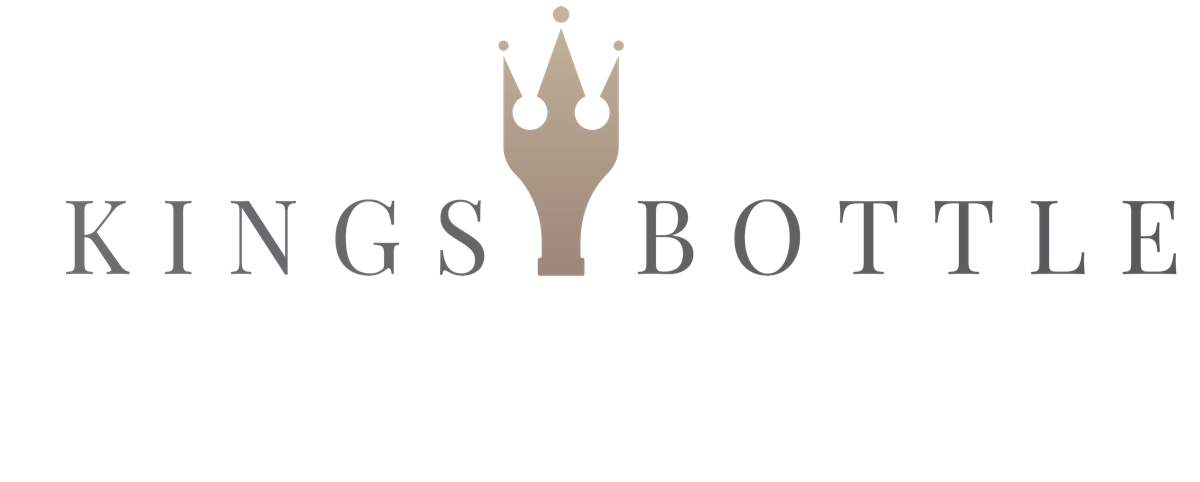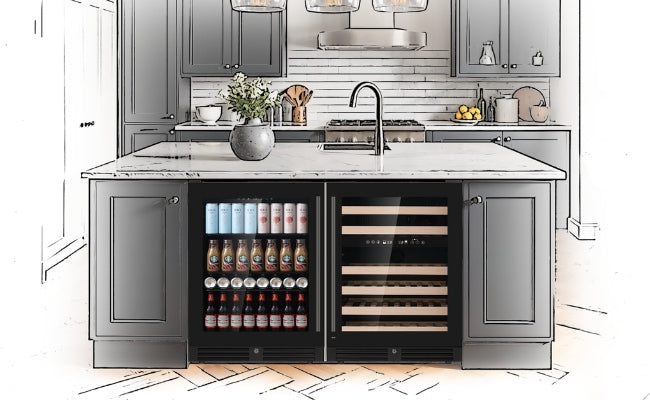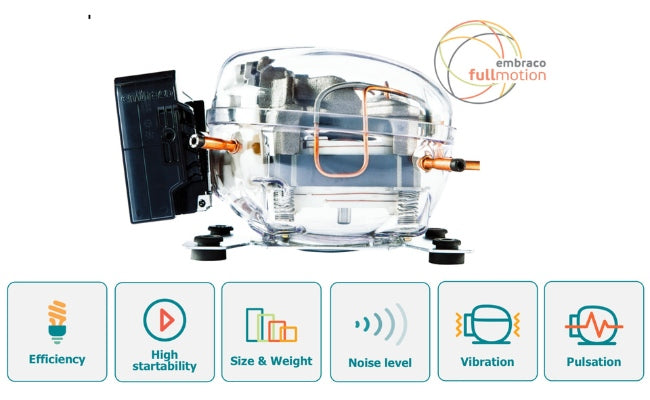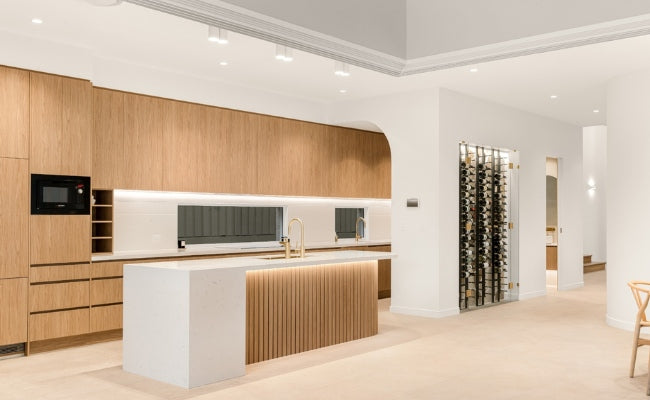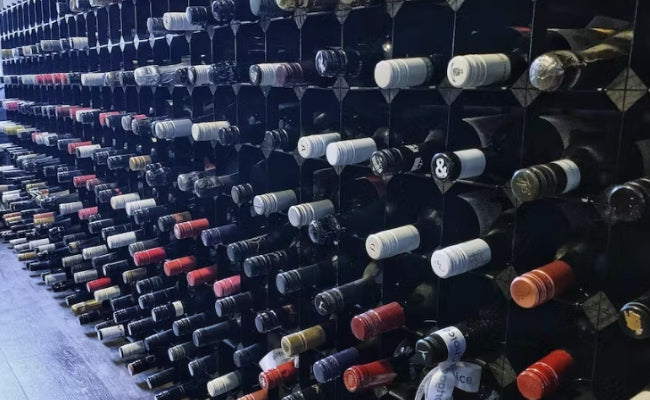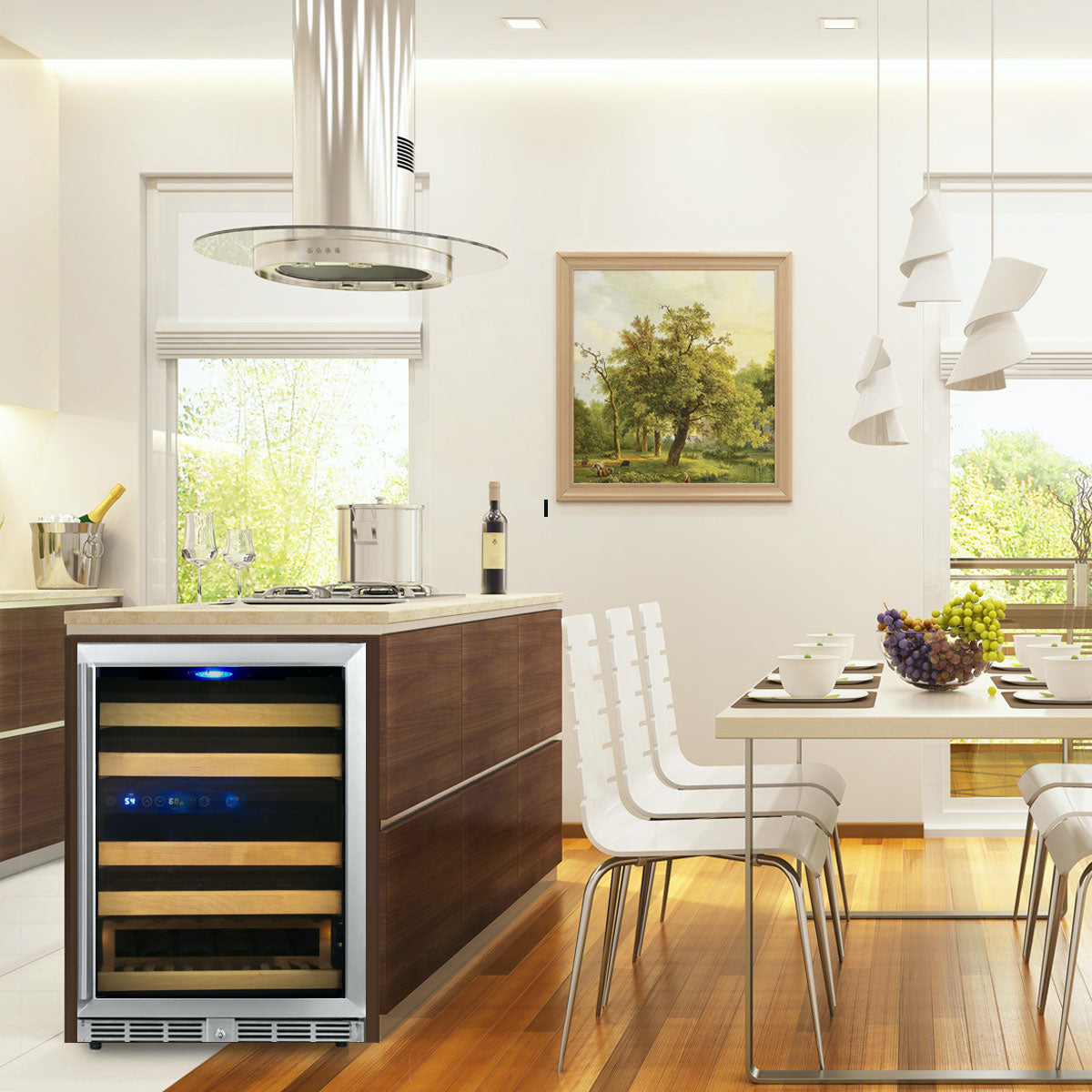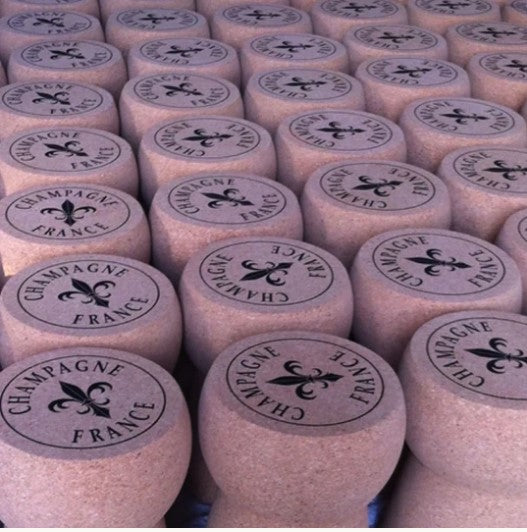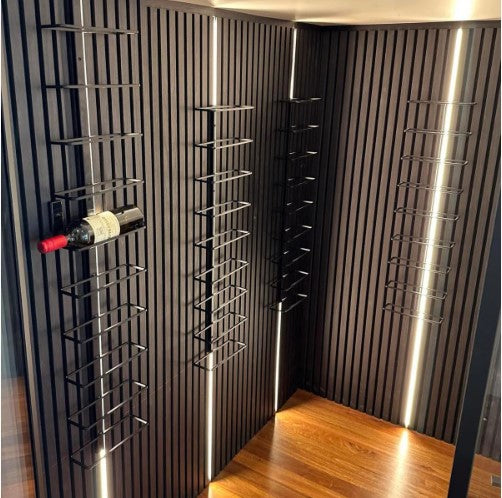
How Does Light Affect Wine?
When it comes to wine storage and preservation, most people focus on temperature and humidity. However, another crucial factor often overlooked is light exposure. Light, particularly certain types of light, can significantly impact the quality and longevity of wine. In this blog post, we'll explore how different types of light affect wine, which types to avoid, and how to protect your cherished bottles. Using the correct light is key to creating that pop feature wall in your home, that sets your collection apart. Look out for feature posts on different wine racking solutions based on your lighting.
How Light Impacts Wine
Light exposure, particularly ultraviolet (UV) light, can cause a range of chemical reactions in wine that lead to undesirable changes in flavour, aroma, and colour. This phenomenon is known as "light strike" or "goût de lumière." When wine is exposed to light, particularly UV rays, it can break down the riboflavin (vitamin B2) and pantothenic acid (vitamin B5) present in the wine. This reaction produces volatile sulphur compounds, which can impart unpleasant smells and tastes, often described as wet cardboard, cooked cabbage, or wet wool.
Types of Light and Their Impact on Wine
Natural Sunlight
Natural sunlight contains high levels of UV rays, which are the most damaging to wine. Even short periods of exposure to direct sunlight can initiate the light strike effect, leading to rapid degradation in both white and rosé wines, which are particularly susceptible due to their lower tannin levels. Red wines are also affected, but their higher tannin and anthocyanin content provides some level of protection.
Fluorescent Light
Fluorescent lights, commonly found in retail environments and some home settings, emit a small amount of UV radiation. Prolonged exposure to fluorescent light can also result in light strike, especially for wines stored in clear or lightly coloured bottles. While not as intense as direct sunlight, continuous exposure to fluorescent lighting should be avoided.
LED Light
LED lights are generally considered safe for wine storage. They emit negligible amounts of UV radiation and produce less heat compared to other light sources. This makes them an ideal choice for wine cellars, wine refrigerators, and retail displays. Use this light to create an impactful feature wall with either our Wall Mounted, Floor to Ceiling or Wine Peg collections.
Incandescent Light
Incandescent lights produce a broad spectrum of light with very little UV radiation. While they are less harmful to wine than sunlight or fluorescent lights, they do generate heat, which can affect the wine if the bottles are placed too close to the light source. Moderation and proper placement are key when using incandescent lighting around wine.
How Bottle Color and Material Affect Light Protection
The color and material of wine bottles play a critical role in protecting the contents from harmful light exposure. This is particularly important because certain wavelengths of light, especially UV light, can trigger chemical reactions in wine that degrade its flavor, aroma, and overall quality. Each bottle color and material provides varying levels of light protection, which is why winemakers carefully select bottle types based on the wine’s intended shelf life and storage conditions.
Clear Glass Bottles:
Clear glass bottles, while visually appealing and often used for rosé and white wines, offer the least protection against UV light. These bottles allow nearly all light to penetrate, leaving the wine highly susceptible to light strike. While they showcase the wine's color beautifully, they are best suited for wines intended for immediate consumption or for storage in completely dark environments. If clear bottles are part of your collection, they should be stored away from any light sources, preferably in a UV-protected storage area or wrapped in protective sleeves.
Green Glass Bottles:
Green glass is one of the most commonly used materials for wine bottles. The darker the green, the better the protection against harmful light. Green bottles filter out a significant portion of UV light and are a practical choice for both red and some white wines. For wines intended for medium-term aging, green bottles provide a good balance between protection and cost-effectiveness. However, they are not impervious to light damage, so proper storage is still essential.
Amber Glass Bottles:
Amber bottles, which are more commonly used for beer and fortified wines, provide superior UV protection compared to green or clear glass. These bottles block almost all UV rays, making them an excellent choice for wines that require long-term storage. While less common in the wine industry, amber bottles are occasionally used for specialty wines or those with delicate profiles that benefit from enhanced light shielding.
Treated UV-Resistant Glass:
An innovation in wine storage, UV-resistant glass offers high levels of protection without compromising transparency. These bottles are treated with a special coating that filters out harmful light while still allowing the wine to be visible. UV-resistant glass is particularly popular for premium wines where both aesthetics and protection are priorities.
Plastic and Alternative Packaging:
Although less common than glass, plastic bottles and alternative packaging like bag-in-box wines can also protect wine from light. Some plastic bottles are treated with UV inhibitors, but they generally offer less protection compared to tinted glass. Bag-in-box packaging, on the other hand, is highly effective at blocking light due to its opaque outer layer, making it a practical choice for wines meant for immediate use.
Best Practices for Wine Storage Lighting
Proper lighting in wine storage is essential to preserve the quality and longevity of your wine collection. Since light, particularly ultraviolet (UV) and high-intensity visible light, can cause "light strike" and degrade the flavor, aroma, and color of wine, thoughtful lighting choices are crucial. Here are some best practices for wine storage lighting to ensure your bottles remain in peak condition while creating an aesthetically pleasing display.
1. Prioritize UV-Free Lighting
UV light is the most harmful to wine, as it triggers chemical reactions that produce unpleasant flavors and aromas. To minimize the risk of light strike:
- Opt for LED lights as they emit negligible UV radiation and produce very little heat, making them ideal for wine cellars, wine refrigerators, and retail displays.
- Avoid fluorescent and incandescent lights, as these can emit UV rays and generate heat, which can affect the wine if placed too close to the bottles.
2. Use Indirect or Diffused Lighting
Direct light shining on wine bottles can amplify the risk of light damage, even if the light source is low in UV radiation. Instead:
- Use indirect lighting that reflects off walls or ceilings to reduce direct exposure to the bottles.
- Install diffusers or frosted glass covers on light fixtures to soften the intensity of the light and eliminate harsh glare.
3. Implement Motion-Sensor Lighting
Motion-sensor lights are an excellent option for wine storage areas, as they turn on only when needed and automatically shut off when no movement is detected. This reduces the overall exposure time to light and enhances energy efficiency. Motion-sensor LED fixtures are a practical and stylish solution for modern wine cellars.
4. Install UV-Protective Films and Window Coverings
If your wine storage area is near windows, natural sunlight can pose a significant risk to your collection. To combat this:
- Apply UV-blocking window films to reduce the penetration of harmful rays.
- Use blackout curtains or motorized blinds for areas with high sunlight exposure, ensuring that the storage space remains dark when not in use.
5. Position Lights Strategically
The placement of lighting fixtures is just as important as the type of lighting you choose. Proper positioning can prevent unnecessary exposure:
- Mount lights above or behind the wine racks, so they illuminate the area indirectly rather than shining directly onto the bottles.
- Avoid placing lights too close to the bottles, as the heat generated—even from LED lights—can affect the wine’s storage environment over time.
6. Opt for Warm Light Colors
Cool or blue-toned lights may seem appealing for creating a modern ambiance, but they often contain wavelengths closer to the UV spectrum, which can be harmful. Instead:
- Choose warm white LED lights with a color temperature between 2700K and 3000K to create a cozy and safe lighting environment for your wine.
Modern Wine Storage Solutions for Light Protection
Modern wine storage solutions seamlessly blend functionality and style to protect wines from harmful light exposure while enhancing their display. Light, particularly UV rays, can degrade wine quality over time, causing unpleasant flavors and aromas. To counter this, many wine cabinets now feature UV-resistant glass doors that showcase collections without risking light damage. These are often paired with dimmable LED lighting, which emits minimal heat and UV radiation, creating a safe and elegant ambiance.
For open-display storage, opaque racks or integrated LED-lit shelving provide indirect lighting to minimize exposure. Motion-activated lights are also gaining popularity, ensuring bottles are illuminated only when needed, reducing cumulative exposure. Compact wine fridges with tinted or UV-coated doors offer controlled environments for urban spaces, while custom-built cellars provide versatile options for larger collections, combining advanced insulation and personalized lighting designs.
These modern innovations not only protect your wine but also transform storage into a luxurious, visually stunning experience, ensuring your collection is preserved and presented at its best.
